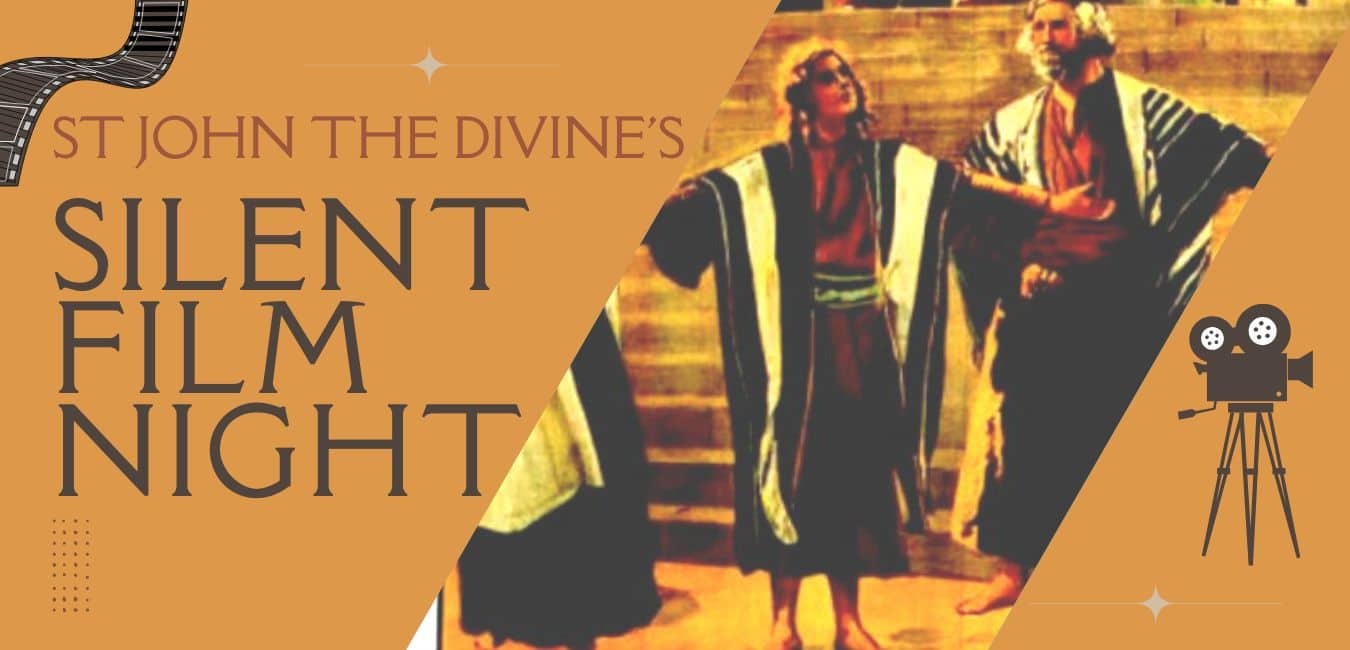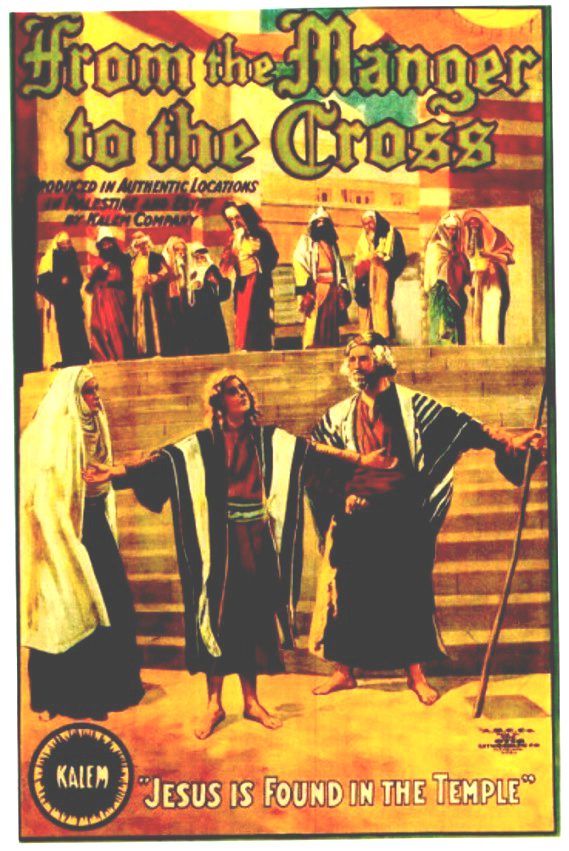
2025 marks the fourth consecutive year of our St John’s Silent Film night. Our organist will provide an original and improvised soundtrack for the movie to help prepare you for Holy Week.
Join us for the St John Silent Film Night 2025
- When: April 12. 2025 at 6 pm
- Where: The sanctuary of our church, 216 E Chandler Blvd, Burlington, WI
- Cost: It is a free event with no tickets needed. Donations are accepted and will go towards the organ and the promotion of more films.
- Movie: A released version of the 1912, “From the Manger to the Cross”
- Organist: The film will be accompanied by our organist, Kevin P. Monteith
Feel free to bring a snack, friends, family, or neighbors to see this piece of history come to life.
St John Silent Film Night 2025 featured film
From the Manger to the Cross: A Landmark in Early Religious Cinema
Released in 1912, “From the Manger to the Cross” is a groundbreaking silent film that occupies an important place in cinema history as one of the first feature-length films to portray the life of Jesus Christ.
The film, directed by Sidney Olcott and produced by the Kalem Company, is remarkable for its ambitious scope, authentic locations, and contribution to establishing religious storytelling as a credible genre in early filmmaking.
Plot and Structure
The film chronicles Jesus Christ’s life, starting with the Nativity in Bethlehem and ending with the Crucifixion.
They organized the film as a series of vignettes, each illustrating key events from the Gospels, such as the Sermon on the Mount, the Last Supper, and Judas’s betrayal.
The narrative is presented with reverence and simplicity, aiming to convey the spiritual essence of the story rather than engage in complex theological debates.
Production and Filming
One of the most remarkable aspects of From the Manger to the Cross is its use of on-location filming in the Middle East. Director Sidney Olcott and his crew traveled to Egypt, Palestine, and other regions to capture authentic landscapes and settings mirrored the biblical world.
This innovative approach was revolutionary, as most era films were filmed in studios or improvised sets. Utilizing actual locations for the movie created a sense of realism and splendor that enthralled viewers.
The film was completed in just six weeks, showcasing the efficiency and dedication of the entire cast and crew. Robert Henderson-Bland, a British actor, portrayed Jesus with a quiet dignity that resonated with viewers. The supporting cast featured Gene Gauntier, who co-wrote the screenplay, as the Virgin Mary.
Reception and Legacy
Upon its release, From the Manger to the Cross was acclaimed widely. Audiences and critics praised its visual beauty, respectful treatment of its subject matter, and innovative use of location filming. The film was mainly celebrated for its ability to convey the biblical story’s spiritual and emotional depth without sound, relying instead on expressive acting, intertitles, and a stirring musical score that accompanied screenings.
The film’s success demonstrated the potential of religious themes in cinema, paving the way for future biblical epics such as The Ten Commandments (1923) and Ben-Hur (1925). It also highlighted the film’s growing cultural and artistic significance as a medium capable of addressing profound and universal themes.
Preservation and Historical Significance
Many film critics and movie historians regard “From the Manger to the Cross” as a landmark in early cinema. It is one of the earliest surviving feature-length films and remains an essential artifact for scholars studying the evolution of filmmaking and the representation of religious narratives in media.
The Museum of Modern Art (MoMA) has preserved the film. It is occasionally screened at film festivals and retrospectives focusing on silent cinema, as well as at St. John the Divine Episcopal Church in Burlington, Wisconsin.
Conclusion
“From the Manger to the Cross” is a wonderful example of how early cinema could truly inspire and connect with audiences. With its beautiful use of real locations, heartfelt performances, and a thoughtful approach to its story, the film was groundbreaking for its time. Over a century later, it continues to be celebrated as a significant achievement in film history and an important milestone in telling religious stories on screen.
Feel free to print out a poster as a reminder or to hang around town; let’s get the word out.
We invite you to join us for this film!
Feel free to bring a friend and a snack!
